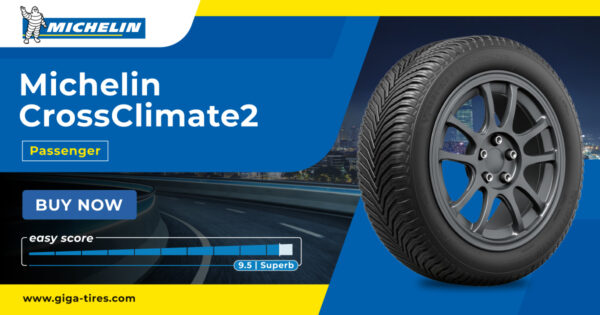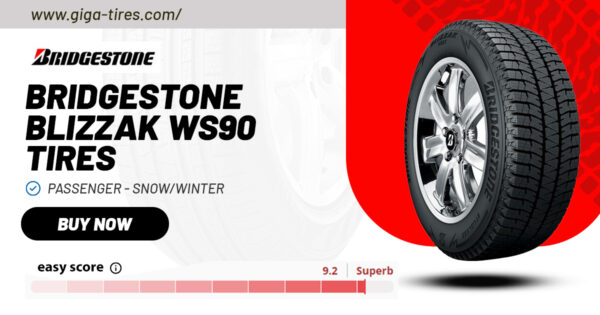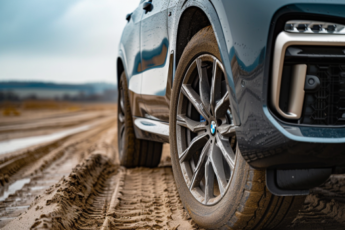Last Updated on 1 week
Discover the Top Tire Picks for Winter and Snowy Escapades
Wintertime driving can be treacherous, with snow, ice, and other daunting weather conditions seriously compromising your vehicle’s traction and safety. As such, equipping your automobile with reliable tires for winter is essential in ensuring smooth travels when temperatures drop. This article discusses three exceptional winter tire options: the Michelin CrossClimate 2, Bridgestone Weatherpeak, and Continental ExtremeContact. These snow tires stand out for their ability to provide superb control and versatility in various winter driving scenarios, offering enhanced performance on icy roads and light snow.
Key Takeaways:
- High-quality winter tires promote safer driving experiences and better vehicle control during icy or snowy conditions.
- Consider top brands like Michelin, Bridgestone, and Continental for dependable winter tire options that guarantee durability and impressive traction.
- Winter tires are designed to remain flexible in freezing temperatures, ensuring optimal performance on wintry roads.
- Understanding the differences between all-season and winter tires is crucial when selecting the appropriate tire set for your driving habits and local climate.
- Invest in seasonal tire maintenance to prolong the lifespan of your winter tires and maintain their optimal performance and safety capabilities.
Understanding the Importance of Winter Tires for Safe Travel
Winter tires are increasingly recognized as essential for road safety and vital for drivers venturing out on snow adventures. Winter tires are explicitly designed to address the challenges of icy and snowy driving conditions, offering clear benefits over standard or all-season tires. In this section, we’ll dive into the importance of winter tires for safe travel and how they contribute to a more stable, grippy ride during winter months.
- Improved Traction and Grip
- Increased Road Safety
- Enhanced Driver Confidence
- Reduced Stopping Distances
- Superior Handling Capabilities
The primary reason for the efficacy of winter tires lies in their unique tread design, advanced rubber compounds, and specialized scaffolding, all of which deliver a more powerful grip on icy and snowy roads. These tires boast deeper grooves and innovative siping patterns that actively channel away slush, water, and ice, ensuring a significantly better grip compared with all-season and summer tires. Most winter tires are formulated with high-grade rubber compositions that remain pliable at sub-zero temperatures, improving overall road contact, balance, and maneuverability.
| Winter Tires | All-season Tires |
|---|---|
| Deeper tread and grooves | Shallower tread and grooves |
| Cold-weather optimized rubber compounds | General-purpose rubber compounds |
| Superior traction in snow and ice | Fair-to-moderate traction on snow and ice |
| Improved handling and control in harsh winter conditions | Limited responsiveness in extreme ice and snow |
As evident, winter tires can make a remarkable difference in preserving road safety and boosting driver confidence during snow adventures. Investing in quality winter tires can protect you and your loved ones on the road by drastically reducing stopping distances and improving control even in the most severe of icy conditions.
How Tires for Winter Enhance Your Vehicle’s Grip and Control
Winter tires offer increased handling capabilities on snow and ice-covered roads, ensuring a safer driving experience. This is mainly due to their distinctive winter tire tread design, specialized rubber compounds, and advanced winter tire features specifically engineered to maximize your vehicle’s grip and snow traction.
The Role of Tread Design in Winter Tires
The tread design is critical in maintaining grip and maneuverability during winter conditions. Winter tires sport unique tread patterns and deep grooves to channel snow and slush away from the tire’s contact patch. Additionally, they come with tiny bites called sipes that offer extra biting edges to ensure maximum grip on slippery surfaces.
| Winter Tire | Tread Features | Snow Traction | Driving Safety |
|---|---|---|---|
| Michelin X-Ice Xi3 | Flex-ice compound, micro-pumps, and Cross Z Sipes | Excellent | High |
| Bridgestone Blizzak WS90 | Multi-Cell technology and 3D zigzag sipes | Superior | Very high |
| Continental VikingContact 7 | Active Grip Silica and Multi-Angle sipes | Outstanding | Very high |
Features That Make Winter Tires Stand Out
It is not just the tread design that sets winter tires apart from other categories. Their rubber compounds are specifically formulated to maintain flexibility in cold temperatures, resulting in better snow performance and driving safety. When temperatures drop, the rubber in all-season tires can stiffen, reducing their traction capabilities. In contrast, winter tire compounds ensure that they remain soft and responsive, which is crucial for maintaining vehicle control in winter conditions.
“I recently switched to winter tires, and the difference in traction is like night and day. I’m now more confident driving in icy conditions, knowing my tires will keep me safe,” said Emily Johnson, a driver from Minnesota.
Some additional winter tire features that contribute to their effectiveness include:
- Increased sipe density for improved snow traction
- Directional tread patterns that quickly expel water, slush, and snow
- Deeper tread depths prevent snow from packing in the grooves
Reviewing Top Winter Tire Brands for Performance and Durability
Some of the most reputable winter tire brands available on the market today are Michelin, Bridgestone, Goodyear, and Continental. Famed for their exceptional performance and durability, these top winter tires are ideal for various winter scenarios. They are also designed to cater to different vehicle types, such as SUVs and light trucks. This section will examine these leading winter tire brands, assessing their performance and durability.
| Winter Tire Brand | Popular Model | Tread Design | Rubber Compound | Driving Conditions |
|---|---|---|---|---|
| Michelin | Michelin X-Ice Snow | Directional tread design with Flex-Ice 2.0 tread compound | Silicaio-based compound | Ice, packed snow, slush, wet and dry roads |
| Bridgestone | Bridgestone Blizzak WS90 | Multicellular tread pattern with NanoPro-Tech compound | High silica content tire compound | Heavy snow, slush, ice, and cold wet conditions |
| Goodyear | Goodyear Ultra Grip Ice WRT | V-TRED Technology and broad circumferential grooves | Winter Reactive Technology compound | Ice, snow, wet and dry conditions |
| Continental | Continental WinterContact SI | Interlocking sipe technology with +Silane compound | High-performance winter compound | Ice, slush, wet and snowy conditions |
These renowned winter tire brands consistently demonstrate their commitment to improving tire performance and durability. Equipped with innovative tread patterns, rubber compounds, and Technology, these top winter tires give drivers the assurance and confidence to navigate treacherous winter conditions. When selecting the right winter tires for your vehicle, considering reputable brands like Michelin, Bridgestone, Goodyear, and Continental is advisable. These brands have a proven track record of delivering high-performance winter tires to withstand and conquer various winter scenarios.
Winter Tire Recommendations: A Deep Dive into User Reviews
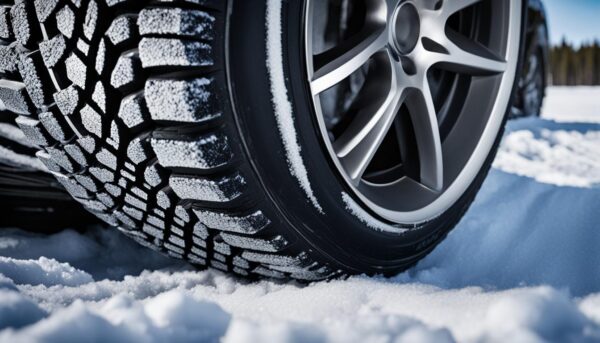
User feedback is integral to the decision-making process when selecting the best winter tires for your vehicle. This section presents tire reviews and ratings from real drivers who have put some of the most popular winter tires to the test. Based on their experiences, we have identified two standout options: the Bridgestone Blizzak WS90 and the Nokian Hakkapeliitta R5.
Let’s take a look at what users had to say about these two highly recommended winter tire options:
| Tire Model | User Comments |
|---|---|
| Bridgestone Blizzak WS90 |
|
| Nokian Hakkapeliitta R5 |
|
“I’ve been driving with Bridgestone Blizzak WS90 tires for three winters now, and they’ve never let me down. They provide a reassuring grip on icy and snowy roads, allowing me to drive with confidence in challenging conditions.” – Blizzak WS90 user
Play an essential role in evaluating winter tire performance, providing valuable insights into their real-world capabilities. Considering these recommendations and the tire reviews presented in this section, you can choose a winter tire that meets your needs and preferences, ensuring a safe and enjoyable driving experience even in the coldest weather conditions.
All-Season vs. Winter Tires: Navigating the Differences
When choosing the right tires for your vehicle, understanding the differences between all-season and winter tires is crucial. While both types have advantages, they also have specific limitations that could impact your driving experience and safety. In this section, we’ll discuss the critical differences between all-season and winter tires and provide insights to help you decide which option best suits your driving habits and local climate.
All-season tires provide acceptable performance in various conditions but cannot match winter tires’ traction on snow and ice.
Let’s begin with all-season tires, designed to be versatile for drivers facing mild seasonal changes. These tires offer convenience by eliminating the need to swap tires as the seasons change. However, their performance in extreme winter conditions is limited due to a compromise between summer and winter tire characteristics.
On the other hand, winter tires are specifically designed to handle the challenges of snowy, icy, and cold conditions. They have a unique tread design and specialized rubber compounds that stay flexible in cold temperatures, boosting their traction compared to all-season tires.
To help provide a clearer picture of how these two types of tires differ, let’s take a closer look at their features in the table below:
| All-Season Tires | Winter Tires | |
|---|---|---|
| Tread Design | Optimized for versatility and decent performance in dry, wet, and mild winter conditions | Deeper grooves and sipes for superior traction on snow and ice |
| Rubber Compounds | Formulated to maintain performance in warm and cool temperatures but may stiffen in extreme cold | Designed to remain soft and flexible in low temperatures, providing better grip in winter conditions |
| Performance in Snow and Ice | A compromise between summer and winter tire characteristics, resulting in reduced performance on snow and ice | Exceptional traction and control on snowy and icy surfaces |
Considering your local climate and driving habits is essential when choosing a tire. All-season tires might be suitable if you live in an area with mild winters and don’t often encounter severe snow and ice. However, investing in winter tires can significantly improve your vehicle’s grip, stability, and safety during the colder months if you reside in a region with heavy snowfall and harsh winter conditions.
- Consider local climate: All-season tires might suffice if your area experiences moderate seasonal changes and light snowfall. However, for regions with harsh winters and heavy snowfall, winter tires are a necessity.
- Assess your driving habits: Frequently driving on snowy and icy roads may warrant using winter tires for improved safety and control.
- Evaluate costs: While purchasing a separate set of winter tires may be a higher upfront cost, it could prove more economical in the long run by prolonging the life of both your winter and all-season tires due to proper seasonal usage.
In conclusion, understanding the differences between all-season and winter tires is essential for choosing the best tire option for your specific needs. Ultimately, your decision should be guided by local climate conditions and driving habits to ensure optimal vehicle performance, safety, and overall satisfaction.
Expert Tips on Choosing the Right Winter Tires for Your Vehicle
Selecting the best winter tires for your vehicle can be overwhelming due to the many options available. Here are some key aspects to consider to make the right choice tailored to your needs and environment.
Matching Tires to Your Driving Habits and Climate Conditions
Climate conditions and driving habits are essential when choosing winter tires. If you frequently drive in snow and ice, look for tires with aggressive tread patterns and high-performance rubber compounds, which provide superior grip and control in harsh winter conditions.
Consider winter tire variants designed to handle wet and cold conditions alongside occasional snow for milder winters. It is better to base your tire selection on the typical requirements you will face rather than the most extreme scenario.
Understanding Tire Size and Load Index for Winter Variants
Tire size and load index are crucial to ensure your chosen winter tires match your vehicle’s specifications. These factors affect compatibility, handling, and safety. The correct tire size can be found in your owner’s manual, vehicle doorjamb, or registration document.
The load index refers to the maximum weight the tire can carry. Matching this with your vehicle’s specifications is crucial to prevent overloading and maintain optimal performance.
Pro tip: To ensure compatibility, always choose winter tire variants designed for your specific vehicle make and model.
The Significance of Speed Ratings in Selecting Winter Tires
The speed rating indicates the maximum speed a tire can safely handle on ideal road conditions. This parameter should align with your vehicle’s characteristics and typical usage to ensure optimal vehicle safety.
Find the speed rating on the tire sidewall, represented by letters ranging from A (the lowest) to Y (the highest) following the load index. For instance, a tire marked ’94T’ has a load capacity of 670 kg (94) and a maximum speed of 190 km/h (T).
Remember that installing tires with a lower speed rating than recommended by your vehicle manufacturer may affect performance, handling, and safety, as well as void any warranties.
- Match tire size and load index with your vehicle specifications
- Consider climate conditions and typical driving habits
- Choose winter tire variants specifically designed for your vehicle
- Ensure the speed rating aligns with your vehicle’s characteristics and usage
In conclusion, selecting winter tires that suit your vehicle, driving habits, and local climate conditions is essential to guarantee optimal performance and safety. Consider factors such as tire size, load index, and speed rating. You can drive confidently and securely with the right winter tires, regardless of the weather.
Why Investing in the Best Tires for Winter Can Save You More
Investing in high-quality tires can offer numerous benefits when driving in challenging winter conditions. From increased safety to better vehicle handling, selecting the best tires for winter not only ensures a reliable driving experience but also has the potential to deliver long-term cost savings. This section will explore how investing in top-performing winter tires can reduce accident risk, minimize wear and tear, and prolong tire life.
Purchasing premium winter tires is more than just an upfront cost; it’s an investment in your safety and driving comfort on icy and snowy roads.
- Safety Benefits: Driving with the correct set of winter tires can significantly impact the overall safety of your vehicle on slippery or snow-covered roads. High-quality winter tires are specifically designed with advanced rubber compounds and tread patterns that improve traction and control, reducing the likelihood of accidents in harsh weather conditions.
- Improved Vehicle Handling: The best tires for winter offer enhanced grip and braking performance on icy and snowy surfaces, which leads to a more stable ride, improved cornering, and better control while maneuvering through treacherous conditions.
- Long-term Value: Opting for top-rated winter tires means investing in a product to withstand challenging weather patterns. As a result, these tires last longer and maintain their performance attributes even after multiple winter seasons, ultimately saving you money over time.
Choosing well-performing winter tires is crucial to elevate your driving experience and safety, all while maximizing the lifespan and value of your investment.
The costs of investing in superior winter tires can be justified when considering their benefits, from enhanced safety to a more enjoyable driving experience. By selecting the best tires for winter, you’re prioritizing your and others’ safety on the road and making a wise long-term investment that could lead to cost savings and increased vehicle longevity.
Seasonal Tire Maintenance: Ensuring Longevity and Performance
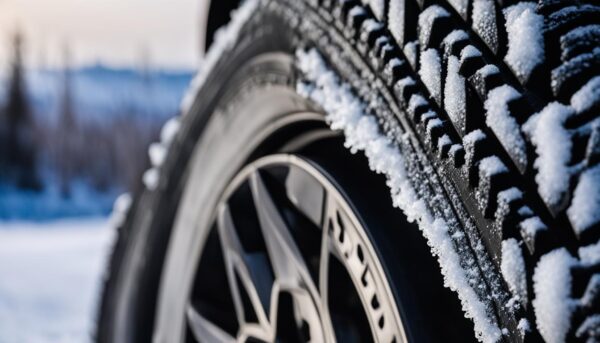
Understanding the importance of seasonal tire maintenance is crucial for ensuring the longevity and performance of both winter and all-season tires. Regular checks and timely replacement are critical factors in maintaining optimal traction and safety throughout the lifespan of your tires. In this section, we will delve into the essential practices of snow tire care and the benefits of adhering to a proper maintenance schedule.
Regular inspections can reveal early signs of wear and tear, allowing you to address potential issues before they escalate into safety hazards or costly repairs. To help guide effective maintenance, consider the following aspects:
- Inspect tire tread depth and pattern
- Check tire pressure
- Rotate tires periodically
- Verify alignment and balancing
- Monitor for signs of damage or abnormal wear
Consistent tire maintenance practices will significantly contribute to tire longevity, which can translate into overall savings by reducing the need for frequent replacements.
Tire Inspection and Maintenance Guidelines
When it comes to seasonal tire maintenance, following a set of established guidelines can help ensure the health of your tires and maintain their performance. The table below summarizes some of the critical maintenance tasks, along with recommended intervals and common warning signs to watch for:
| Maintenance Task | Recommended Interval | Warning Signs |
|---|---|---|
| Tread Depth Inspection | Monthly | Tread depth below 2/32″, uneven wear, exposed cords or steel belts |
| Tire Pressure Check | Monthly | Underinflation, overinflation, tire pressure warning light |
| Tire Rotation | Every 5,000 to 8,000 miles | Uneven tread wear, reduced traction, vibration |
| Alignment and Balancing | Every 12,000 to 18,000 miles, or as needed | Poor handling, uneven tread wear, steering wheel vibration, off-center steering wheel |
| Damage and Wear Inspection | Monthly and after-impacts | Cuts, punctures, sidewall bulges, cracks, excessive wear |
By adhering to a proper maintenance schedule, you can extend the longevity of your tires and maintain vehicle performance. It’s crucial always to stay aware of your tire’s condition to prevent potential safety risks.
“The best way to avoid tire-related safety concerns is to maintain a proactive approach towards tire care and ensure a seasonal maintenance program is in place.”
In conclusion, seasonal tire maintenance is vital in preserving the longevity and performance of your winter and all-season tires. You can maintain optimal traction and safety throughout your tire’s lifespan by staying vigilant with regular checks and following timely replacement schedules.
From Michelin to Bridgestone: Breaking Down Winter Tire Options
This section will examine two prominent tire options, focusing on the Michelin CrossClimate 2 and Bridgestone Blizzaks. These tire models offer versatile solutions, prioritizing year-round performance and advanced snow tire technology.
Michelin CrossClimate 2: An All-Weather Solution
The Michelin CrossClimate 2 offers an excellent all-weather tire option for drivers seeking a versatile choice with dependable year-round performance. This tire is especially suited for regions with moderate seasonal changes, where switching between summer and winter tires is not crucial or preferred. The Michelin CrossClimate 2 incorporates a unique combination of
- Advanced rubber compounds for better grip
- Adaptive tread patterns for optimized traction
- Enhanced wet and snow performance
These characteristics enable the tires to provide a smooth, safe driving experience in various weather conditions, making them a valuable investment for drivers needing reliable all-weather tires.
Bridgestone Blizzaks: The Pinnacle of Snow Tire Technology
On the other hand, the Bridgestone Blizzaks line of tires, consisting of models like the Bridgestone Blizzaks WS90 and DM-V2, represent the apex of advanced snow tire technology. Specifically designed for harsh winter conditions, these tires feature:
- Innovative tread patterns that maximize snow and ice grip
- High-performance rubber compounds that maintain flexibility in cold temperatures
- Enhanced stability and control during winter driving
The Bridgestone Blizzaks showcase premium traction and stability, empowering drivers to overcome challenging and slippery road conditions.
| Feature | Michelin CrossClimate 2 | Bridgestone Blizzaks |
|---|---|---|
| Best Suited Conditions | All-weather (moderate seasonal changes) | Harsh winter weather (heavy snow and ice) |
| Rubber Compound | Advanced compounds for better grip | Frost-resistant combinations for cold flexibility |
| Tread Pattern | Adaptive for optimized traction | Innovative for superior snow and ice grip |
| Performance | Consistent year-round performance | Advanced winter traction and control |
Ultimately, deciding to invest in Michelin CrossClimate 2 all-weather tires or Bridgestone Blizzaks snow tires depends on your specific driving needs, local climate, and personal preferences. Both options cater to diverse driving requirements and remain engineered to provide maximum safety and performance during individual seasons or throughout the year.
Conclusion
In conclusion, winter tire selection enhances driving confidence and safety during the colder months. From top brands like Michelin, Bridgestone, and Continental to understanding the importance of traction, tread design, and rubber compounds specific to winter tires, investing in the right snow tires is indispensable for quickly navigating challenging weather conditions.
By selecting the appropriate winter tires based on driving habits, local climate, and vehicle compatibility, drivers can ensure a smooth, secure, and enjoyable driving experience regardless of the season. A well-thought-out tire investment contributes to optimal road safety and offers potential long-term savings by reducing the likelihood of accidents and wear and tear on your vehicle.
Remember to maintain seasonally appropriate tire care to maximize your investment in performance and durability. By investing time in choosing the right winter tires and caring for them properly, you’re taking an essential step towards ensuring your safety and driving satisfaction during those cold, icy months.
FAQ
What are some popular winter tire brands known for their performance and durability?
Leading winter tire brands include Michelin, Bridgestone, Goodyear, and Continental. These brands offer various winter tire options that deliver exceptional performance and durability, suitable for multiple winter scenarios and car types such as SUVs and light trucks.
What are some key features that make winter tires stand out?
The features of winter tires include their specialized tread patterns and rubber compounds engineered to stay flexible in cold temperatures. This improves grip and maneuverability by improving performance and driving safety during winter.
What is the main difference between all-season and winter tires?
While all-season tires provide acceptable performance in various conditions, they cannot match the traction and grip that winter tires offer on snow and ice. The choice between all-season and winter tires depends on local climate, driving habits, and specific needs for traction during winter conditions.
How do user reviews help in choosing the right winter tires?
By exploring user reviews, you can gauge the most popular and positively reviewed options for winter tires. Some examples include the Bridgestone Blizzak WS90 and Nokian Hakkapeliitta R5, known for their remarkable traction in deep snow and ice. User feedback helps potential buyers make informed decisions based on real-world experiences.
How can I match tires with my driving habits and local weather?
Consider tread design, tire size, speed rating, and load index when selecting winter tires. This ensures you choose the appropriate tire for your driving habits and local climate conditions, improving overall performance and safety.
What factors should I consider when choosing my vehicle’s correct tire size and load index?
Selecting the correct tire size and understanding the load index is crucial for the compatibility and optimal performance of winter tire variants. The recommended tire size and load index are in your vehicle’s owner manual or the driver’s side door jamb. Ensuring the winter tires match your vehicle’s requirements maintains safety and performance standards.
Why is following seasonal tire maintenance for winter and all-season tires important?
Seasonal tire maintenance ensures the longevity and performance of winter and all-season tires. Regular checks and timely replacement help maintain optimal traction and safety during changing weather conditions. Proper care also prevents uneven wear and potentially hazardous driving situations caused by worn-out tires.




